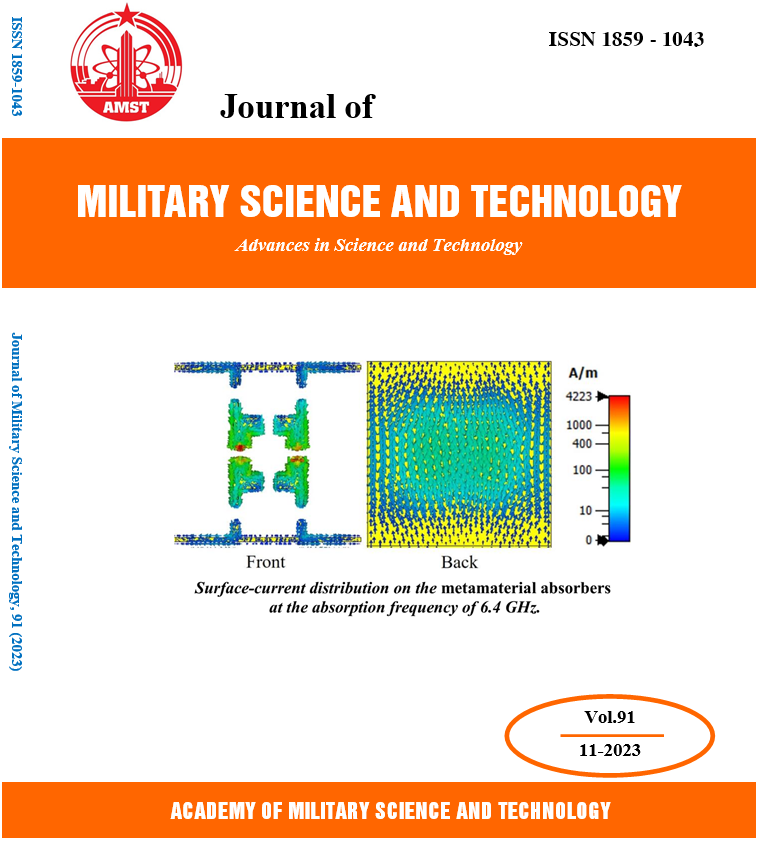Design of a weaponized drone munitions system with a bomb simulation using PVC material
493 viewsDOI:
https://doi.org/10.54939/1859-1043.j.mst.91.2023.73-84Keywords:
Weaponized Drone; DJI Matrice 600; Waypoint.Abstract
The advancement of drone technology in the 21st century has experienced tremendous progress. Drones are now utilized not only for military purposes but also in commercial applications, featuring sophisticated systems such as waypoint navigation and automatic camera tracking, and even as a tool for teaching natural sciences to students. The objective of this research is to design a multifunctional armed drone system capable of performing various tasks, such as mapping, reconnaissance, and attack. The outcome of this research is a prototype of an armed drone based on the DJI Matrice 600, equipped with an ammunition release system that can drop payloads at predetermined waypoint coordinates. The ammunition release system has been tested in various configurations, with data from 10 tests indicating that 6 ammunitions exploded, while 4 others failed to explode. The failure of the ammunition to explode was due to the drone's proximity to the target and the uneven terrain of the target area, which hindered the proper functioning of the detonation trigger system.
References
[1]. Abdul Kadir, A., Sapuan, S. M., Zainudin, E. S., & Jaafar, C. N. A.. “Mechanical properties of polyvinyl chloride (PVC) composites filled with kenaf core and/or kenaf fiber”. Fibers and Polymers, 19(1), 148-155, (2018).
[2]. Austin, R. “Unmanned aircraft systems: UAVs design, development and deployment”. John Wiley & Sons, (2016).
[3]. Boyle, M. J. “The race for drones: The evolution of the drone market and the need for a regulatory framework”. Computer Law & Security Review, 34(4), 772-785, (2018).
[4]. Clothier, R. A., Greer, D. A., Greer, D. G., & Mehta, A. M. “Risk perception and the public acceptance of drones”. Risk Analysis, 35(6), 1167-1183, (2015). DOI: https://doi.org/10.1111/risa.12330
[5]. Crootof, R. “The killer robots are here: Legal and policy implications”. Cardozo L. Rev., 36, 1837, (2016).
[6]. Horowitz, M. C., & Scharre, P. “The moral and legal imperatives of weaponized drones”. The National Interest, 143, 29-39, (2015).
[7]. Huang, Y., Nascimento, D. V., & Ratti, C. “An analytical model for the environmental design of drone systems”. Energy and Buildings, 158, 1423-1436, (2018).
[8]. International Committee of the Red Cross. “Drones and the law of armed conflicts”, (2017).
[9]. Karimov, M., Samadov, M., Abdukadirov, S., & Rakhmonov, R. “Simulation of drone-borne radar system for detection and identification of objects”. International Journal of Advanced Computer Science and Applications, 11(3), 220-225, (2020).
[10]. Murray, M. B., McGreevy, J. P., & Russell, S. M. “The ethical implications of military drone use”. In Ethics and the Future of Spying (pp. 134-150). Routledge, (2021).
[11]. Watts, B. D. “The maturing revolution in military affairs”. Center for Strategic and Budgetary Assessments, (2016).







